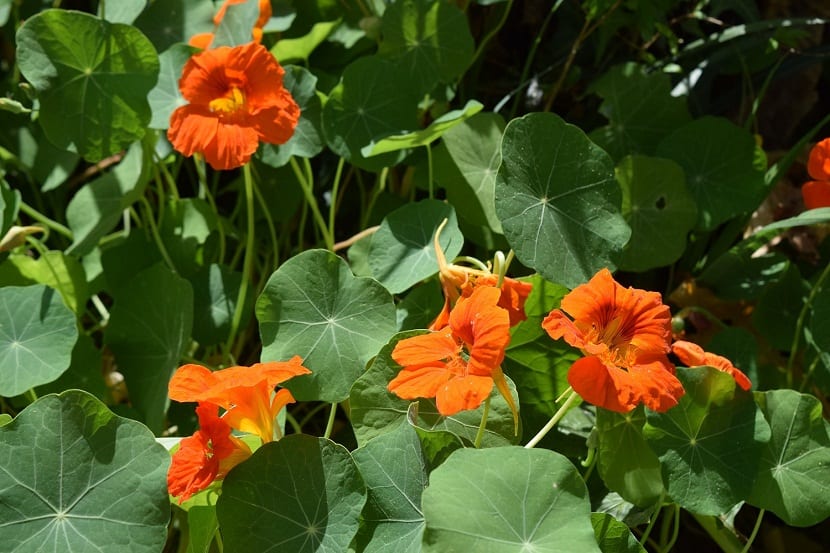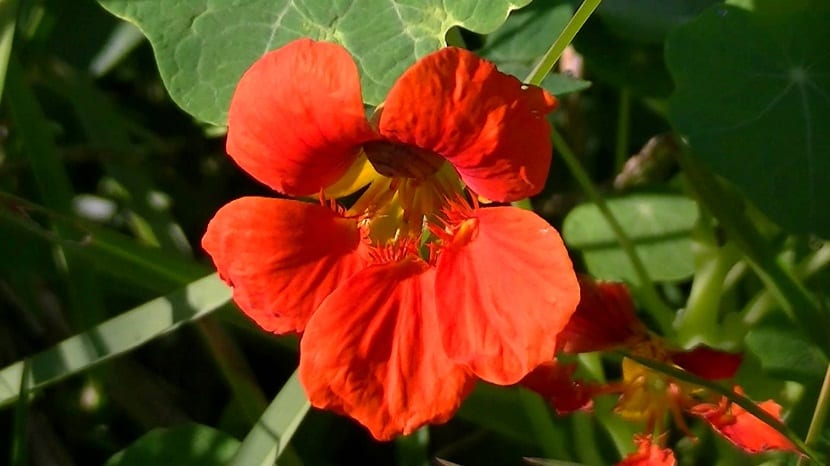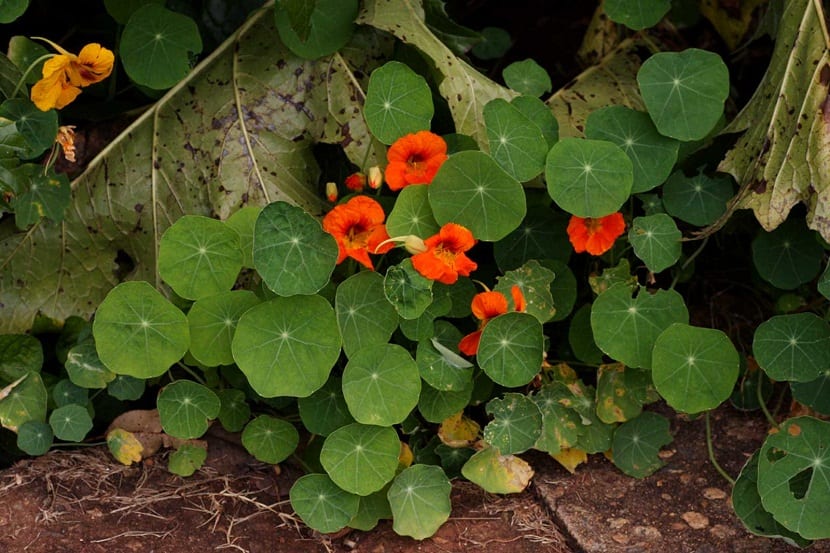
The Tropaeolum majus plant, more commonly known as nasturtium, is a plant native to South America, mainly from Peru. It is a long-lasting plant and belongs to the Tropeolaceae family.
These plants include several species that are also known as nasturtiums. They are long-lasting or annual and they originate in the southern areas of America, being used as ornamental plants throughout the world.
Characteristics of the Tropaeolum majus plant

Nasturtiums are plants that can have a upright, climbing or prostrate bearing, with leaves with a round shape, characteristic that produces very typical flowers. Generally its stems are long, mainly funnel-shaped, 1,5 to 5 centimeters long, of various colors depending on the species.
It is not a suitable plant to be grown in pots, because need space and an appropriate depth of the soil to develop to the maximum.
Cultivation of the Tropaeolum majus plant
They are plants that is preferable grow them in places where they do not receive sun during the hottest hours of the dayto. Nasturtiums do not have problems with high temperatures, on the contrary, they fear frost.
By cultivating them, we must be very careful during winter, to remove the tubers from the ground and store them in a cool, dry place until the following spring.
In autumn and when the leaves of the nasturtium begin to turn yellow, irrigation must be stopped, since this symptom indicates that the plant is entering the vegetative rest.
It will be the plant that tells us in the spring that it is time to resume watering, with the vegetative restart.
Caring for the Tropaeolum majus
Irrigation: from spring and throughout the summer we must water regularly to keep the soil always slightly moist. In any case, we should not overdo it, as they can withstand even short periods of drought.
Land type: to transplant, it should be considered that if a soil that is too rich in nutrients is used, the plant will have a better development of the vegetative part than the reproductive part, which in this case would be the flowers.
Therefore and for have a beautiful and lush bloom, it is preferable not to use too fertile soils. However, we must bear in mind that these are plants that do not like stagnant water, therefore, it is necessary to take care that the soil drains well.
Fertilizer: during the growth period, it is necessary to dilute a good fertilizer in the irrigation water to be administered every two or three weeks and then reduce by half, the doses indicated on the fertilizer package.
Pruning: the Tropaeolum plant cannot be pruned. Only the parts that are dry or damaged will be removed to avoid making it a home for parasitic diseases.
Flowering: the flowering period varies according to the species.
Multiplication of the Tropaeolum majus

The multiplication of this plant is usually carried out by seeds, but first we must work the soil in order to remove the surface crust and make it less compact, to later sow. If the species that we are going to sow is growing a lot, then we have to plant a stake near the seed, where the seedling can adhere when it grows.
The seedlings can also be sown in special boxes or in pots, using a mixture of peat and sand in equal parts and at fairly low temperatures, around 13 ° C, taking care to cover the seeds with approximately 1 cm of sand. Germination should take place after a month. In the case of tuberous species, it is multiplied by the division of the tubers.
Parasites and diseases
Plants bloom little- This symptom is due to the fact that the plant receives very little sun.
remedies: we have to move the plant to a sunnier place, but not during the hottest hours of the day.
Presence of small whitish animals on the plant: If we observe small, yellowish-white or greenish insects, it is almost certain that we are in the presence of aphids or lice.
remedies: treat the plant with specific pesticides readily available in a nursery. These are generally systemic products, that is, they enter the lymphatic circulation of the plant and are therefore absorbed during the feeding of the insects.